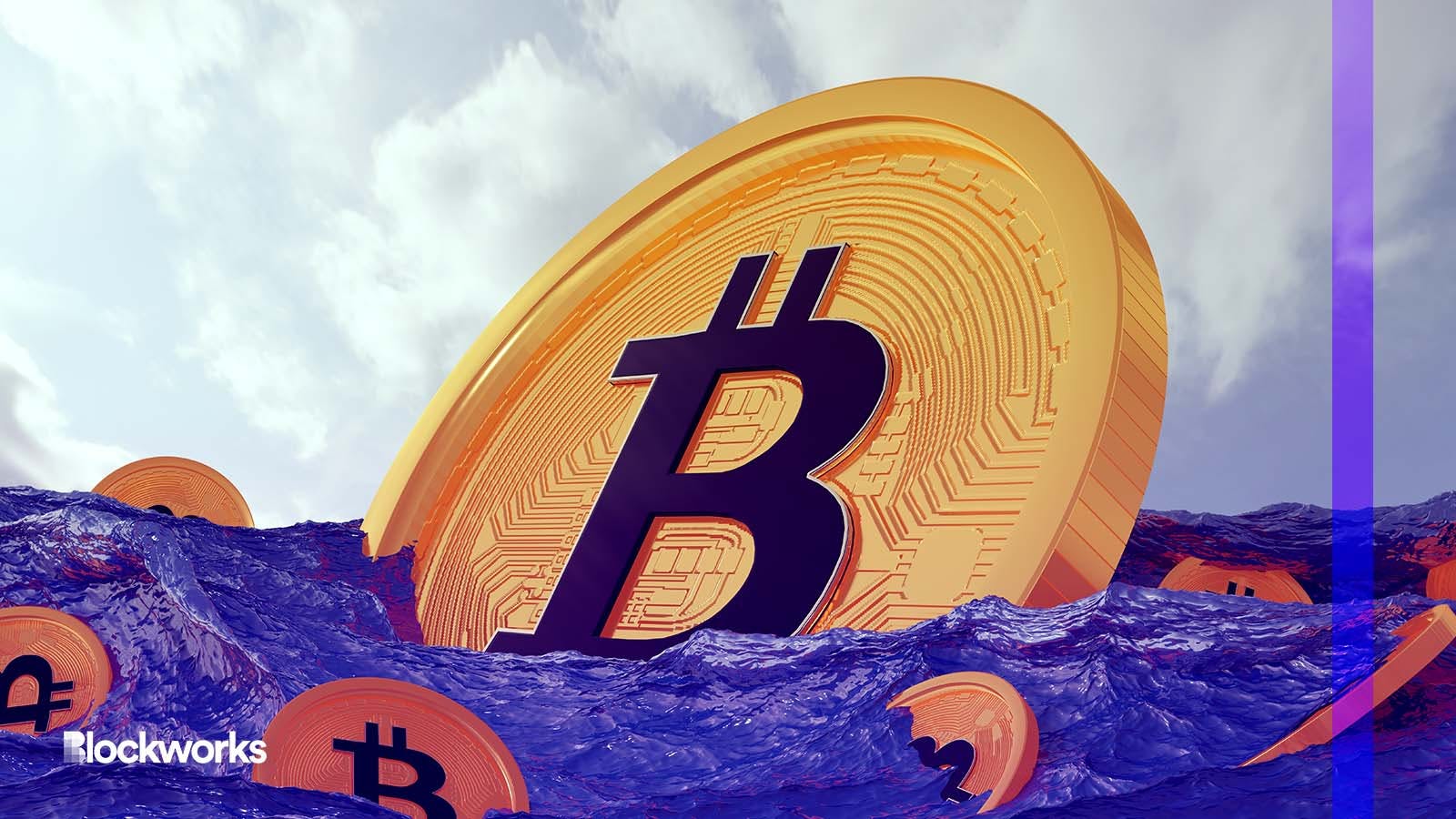Bitcoin Mempool Surges Point to New Life for World’s First Blockchain
Bitcoin had more unconfirmed transactions in its mempool last week than at any point over the past 10 months

nuttapon averuttaman/Shutterstock.com modified by Blockworks
The number of Bitcoin transactions waiting to be confirmed by the network reached its highest point since Terra imploded last week — a sign of renewed interest in the premiere blockchain.
On the afternoon of Mar. 9, nearly 81,000 transactions briefly sat in Bitcoin’s “mempool” — a data structure that stores valid transactions yet to be added to the blockchain.
That was just 1,000 shy of last year’s peak on May 13, as algorithmic stablecoin UST was crashing to zero, and 66% more than the 48,000 sitting unconfirmed in mid-November following FTX’s sudden implosion.
Mempool spikes like these can occur when there is a surge in network usage, although a sudden drop in mining power can have the same effect.
Only so much transactional data can fit into each Bitcoin block (averaging to around 2,000 transactions). When there’s an excess, users must wait for their transactions to flow through the mempool.
Users can incentivize miners to process their transactions first with higher fees. So when the mempool really fills up, miners may opt to only process transactions with more bitcoin attached — or even set a minimum fee — leaving those with smaller fees to wait.
When this happens, the mempool is often left with a large amount of unconfirmed, low-fee transactions. So, higher fees are considered one of the primary causes of mempool surges; fees rise along with demand for blockspace.
Oftentimes, mempools spike when service providers consolidate transactions that have occurred off-chain all at once, Bitcoin developer Rene Pickhardt told Blockworks.
These consolidations would be somewhat easy to spot in the mempool — lots of transactions added all at once with rather small fees.
Bitcoin transaction fees still low compared to the bull run
But why did the Bitcoin mempool spike last week?
Ho Chan Chung, head of marketing at analysis platform CryptoQuant, pointed Blockworks to a jump in trading volumes across spot and perpetuals markets for both bitcoin (BTC) and ether (ETH) as USDC fell below $0.90 on Mar. 11.
The mempool could have reflected those transactions attempting to be settled on-chain.
But unconfirmed transactions peaked about 30 hours before top-two stablecoin USDC depegged from the US dollar, an event which spilled over to a number of other stablecoins, including DAI.
The number of unconfirmed transactions also quickly subsided, before USDC briefly sank to all-time lows.
If the surge were related, it would mean a large number of stablecoin holders all traded their tokens for bitcoin in the lead up to Silicon Valley Bank’s failure on Mar. 10, anticipating negative impacts on the wider crypto ecosystem. Service providers would’ve then had to consolidate those transactions on-chain, perhaps all at once.
It’s hypothetically possible. (Ethereum also saw a slight rise in unconfirmed transactions around the depeg, during the event, rather than in the days leading up to it). But pseudonymous Bitcoin developer 0xB10C wasn’t convinced.
“Generally, I don’t think it’s related to the depeg if that was 30 hours later,” they told Blockworks. “It seems like someone broadcast many blocks of transactions around that time at a lowish fee rate of 2 sat/vB.”
Those might have been consolidations, and “combined with the normal intraday activity and some larger Ordinal inscription transactions that are frequent currently, this did probably caused feerate estimators in wallets to suggest a higher fee rate,” 0xB10C said.
Right now, Bitcoin users can get a transaction processed in around 29 minutes for 22 sat/vB ($0.825), according to mempool.space. Those in a hurry can pay around 48 sat/vB ($1.78) to have miners add their transactions in the next block (processed in 10 minutes) — far less than the average during the heat of the last bull market, when it hit more than $60 per transaction.
(NB: There is no global “Bitcoin mempool.” Every node has their own mempool with their own data set, although they can be quite similar, 0xB10C said.)
How much Bitcoin mempool is too much mempool?
Colin Harper, head of research and content at Bitcoin mining pool Luxor, agreed that Ordinal inscriptions are a significant driver of transaction fees right now.
“Bitcoin price volatility typically increases transaction volume and I believe we’re seeing that now as well, but if it weren’t for inscriptions taking up so much for blockspace, fees would be lower than they are right now,” Harper said.
There are currently about 52,600 unconfirmed Bitcoin transactions. Mempool weight (the size of the data contained in the mempool) is around 222 vMB. Bitcoin Core’s default maximum mempool limit is 300MB.
All this begs the question: At what point does this become a problem?
“Once the mempool data structure (transactions and a bit of overhead per transactions) reaches 300 MB of system memory, low feerate transactions aren’t accepted anymore and some might also be dropped,” 0xB10C said.
Not all node operators use the 300MB default, though. Some set higher limits to avoid dropping low feerate transactions. With this in mind, it’s not exactly true that the Bitcoin network is “congested” when the mempool fills up — transactions will still be processed, it’s just that they may be more expensive.
That’s not necessarily a bad thing, either, according to Jeff Yew, founder of digital asset manager Monochrome.
“Like the layered banking settlement and payments infrastructure, the increased demand and ultimately cost for base-layer bitcoin settlements is a good thing,” Yew said.
“It further strengthens the security of the network, while encouraging the development and use of second-layer solutions, such as the Lightning Network, for day-to-day payments.”
Get the news in your inbox. Explore Blockworks newsletters:
- The Breakdown: Decoding crypto and the markets. Daily.
- 0xResearch: Alpha in your inbox. Think like an analyst.






